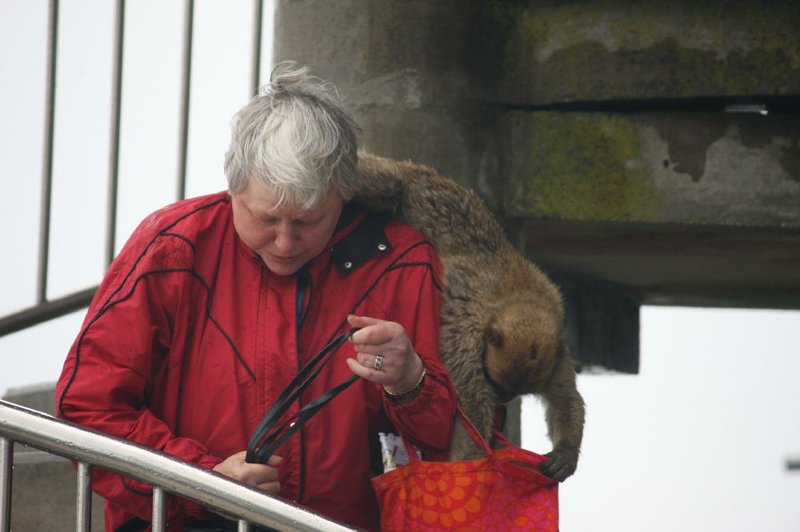GIBRALTAR -- Barbary macaque monkeys are the star attractions in Gibraltar. Still, this historic port town is steeped in military history around the landmark Rock of Gibraltar. The town wears its scars well with plenty to offer visitors who make the trip.
The British territory next to Spain has a striking and unique landscape with sweeping views of Europe and Africa. Its long military history stems from being a strategic point between the Atlantic Ocean and the Mediterranean Sea. The ancient Greeks referred to the Rock as one of the two "Pillars of Hercules."
Britain acquired Gibraltar from Spain in 1704 during the War of Spanish Succession. Spain has persistently sought its return ever since. The territory has lately been in the news: On June 16, now-former British Prime Minister David Cameron made a brief visit, the first serving British prime minister to step foot in Gibraltar since 1968.
Here are some highlights to take in during a visit.
BARBARY MACAQUES
Europe's only free-ranging monkeys are sure to enliven an afternoon enjoying the views from its famous rock. While some regard tourists calmly, others can be astute opportunists -- eager to pounce and snatch items out of hands and bags. Visitors can reach them by a cable car up to the rock, which includes a stop at the Apes' Den. They have lived in Gibraltar since the British first captured the rock in 1704 and have remained through many sieges. Folklore says the British will leave only when the monkeys do. During World War II, Winston Churchill ordered that their numbers not drop below 24. Warning: They have long canine teeth and can bite if disturbed.
THE TUNNELS
Gibraltar features a labyrinth of tunnels more than 32 miles long that were built for military purposes. Some were dug by hand and gunpowder blasts during The Great Siege between 1779 and 1783, when France and Spain tried to recapture it from the British during the American Revolutionary War. They were built to get guns to cover a vulnerable spot off the northern face of the Rock of Gibraltar. Visitors can walk in the tunnels, which have cannons pointing out of openings in the rock. During World War II, the British added on to the tunnels out of concern Gibraltar would be attacked. These tunnels were built between 1939 and 1944 by the Royal Engineers. Tours are available.
THE MOORS
The Moors occupied Gibraltar between 711 and 1309 and between 1350 and 1462. The Tower of Homage remains from an original castle complex that once stretched to the sea. The structure's outside walls bear the scars of conflicts during the many sieges on the peninsula. The Gibraltar Museum, which provides a historical overview of the town, includes well-preserved 14th-century Moorish baths in the museum basement.
ST. MICHAEL'S CAVE
Gibraltar is home to a network of limestone caves in the town's Upper Rock Nature Reserve. It's used for concerts and plays.
If you go
Gibraltar gets a number of visitors on port calls from cruise ships. You can also fly directly to Gibraltar from various British airports, or walk or drive across the border from Spain. Malaga, Spain, is about 85 miles away.
Most visitors get their sightseeing done on foot but there are taxis.
Travel on 08/28/2016

